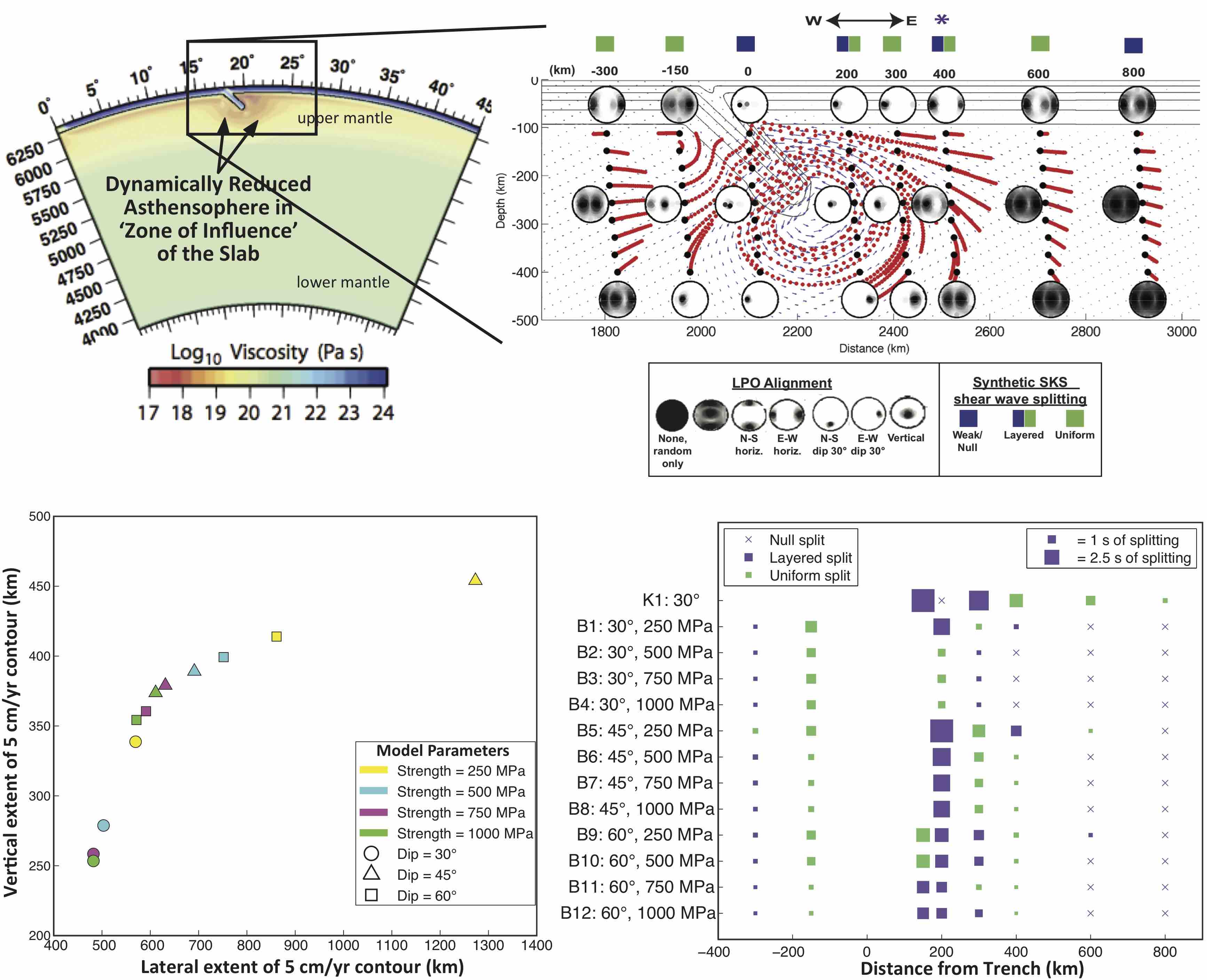Welcome to the Pacific Ring of Fire Project page!
Welcome to the Pacific Ring of Fire Project page! I am pleased to announce the next phase in the Geodynamics Research and Visualization Group initiatives with my recently awarded National Science Foundation CAREER grant.
As a part of this award, my group will be developing unprecedented, high-resolution, numerical simulations of subduction along the entire Pacific Ring of Fire system to examine physical mechanisms for anomalous volcanoes at subduction zone edges,
as well as exploring the larger questions of coupling between localized subduction zone dynamics and mantle wide convection.
In addition, we will be collaborating with the Space Visualization Laboratory at the Adler Planetarium in Chicago to produce visualizations of subduction along the Pacific Ring of Fire in
planetarium format.
Scientific Background
Quantifying plate boundary dynamics, and the dynamics of subduction zones in particular, is critical to understanding plate tectonics
and to providing an accurate tectonic framework for the forces governing the world’s greatest earthquakes, the distribution of arc volcanism,
and large-scale mountain building.
However, accurately characterizing the dynamics of subducted oceanic lithosphere, as well as how the subducted plates perturb the surrounding mantle into which they descend, remains a challenge due to the inaccessibility of the Earth’s interior.
As the plates descend into the interior of the Earth, the spherical nature of the system and material properties of the plates result in complex geometries and intersecting plate segments.
Moreover, the material deformation in the upper mantle is predominantly governed by a non-linear dependence on the strain-rate, resulting in non-linear flow dynamics, which together with the complex geometries, require sophisticated tools and model design to accurately quantify the system dynamics.
This career award examines these processes by designing and developing state-of-the art, data-driven, models of natural subduction systems on Earth. Specifically, the study will examine the following:
(1) Length-Scales and Mechanisms of Slab-driven Plate-Asthenosphere Decoupling in Subduction Zones

(MacDougall et al., 2017)
(2) A New Class of Volcanism Driven by Three-dimensional Slab-edge Asthenospheric Upwellings

(Jadamec, M., Journal of Geodynamics, 2016)
*This page is supported in part by NSF CAREER Award EAR-1945513 awarded to M. Jadamec.

